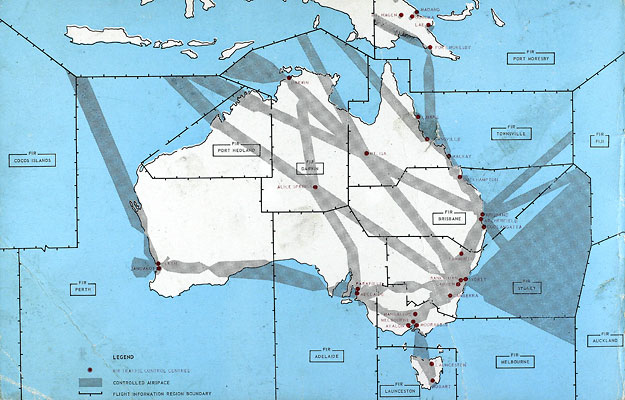
This chart
shows the extent of controlled airspace in grey. In those days Control
Areas (CTA) were designed to encompass the procedural tolerances of the
applicable airway(s). This meant coordination with Flight Service for
any diversions off-track due to weather.
The chart also shows the locations of ATC Units as red dots. Mt Isa Tower is no longer with us, but there are a few additional Towers these days. The black spiky lines indicate Flight Information Region (FIR) boundaries - each FIR being run from its own Area Control Centre. Today (2007) there are only two FIRs and Centres, Melbourne and Brisbane. Fiji and Auckland FIRs were, of course, foreign but the Port Moresby FIR was considered part of Australian airspace in those days.
An Air Traffic Controller could expect to be posted to any of these Units during their career, although postings to 'out-station' units were normally for a fixed period of 2-3 years, followed by a return to a capital-city Unit.
Note: Roll your cursor over various points on the chart to identify them.
NEXT >
Back to the main Air Traffic Services index